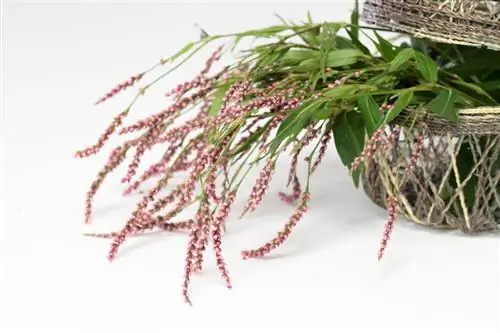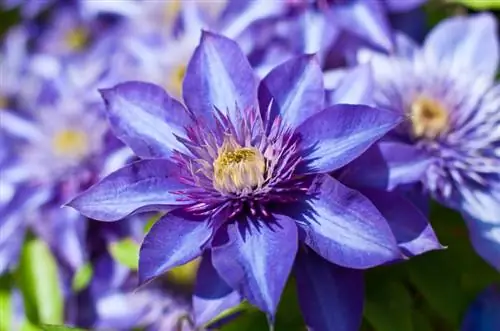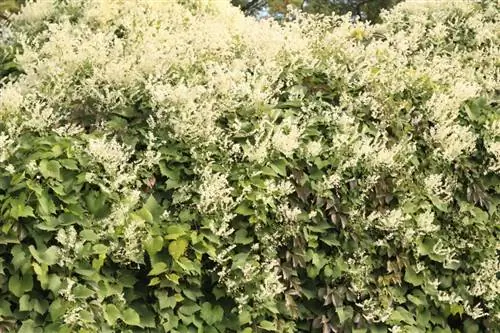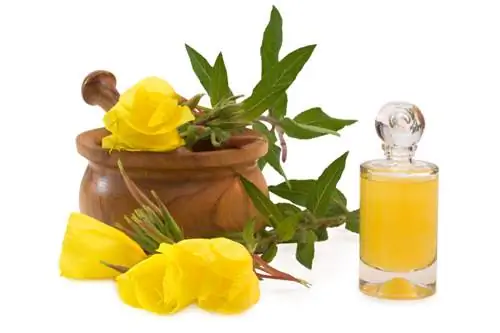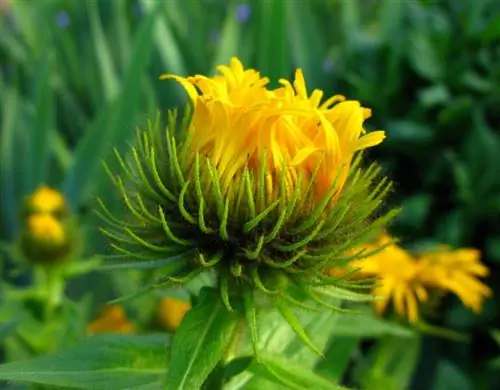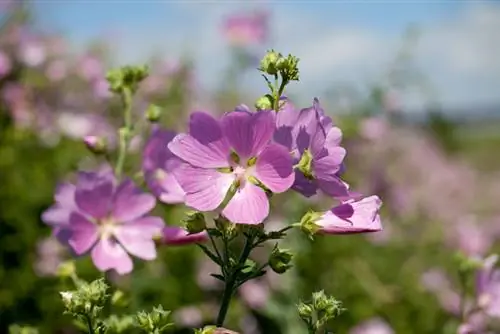- Author admin [email protected].
- Public 2023-12-16 16:46.
- Last modified 2025-06-01 06:02.
The knotweed family is very diverse and includes various perennials, climbing plants and ground cover plants. What all knotweeds have in common is their strong growth, which is why they need to be kept in check with regular pruning. In particular, the creeping knotweed (Fallopia baldschuanica), a strong-growing climbing plant, is often used to green facades and walls. The plant is very easy to care for.

How do I care for knotweed properly?
Knotweed care includes regular watering, fertilizing in spring or fall with compost, regular pruning and controlling growth. Knotweed is hardy, but may require winter protection. Yellow leaves indicate a pot that is too small.
Do I have to water knotweed?
Knotweed has only a small water requirement and can cover this completely itself due to its very deep roots.
When and with what can I fertilize knotweed?
Either in early spring or late autumn - in preparation for winter - fertilize the knotweed with some mature compost. Further fertilization is usually not necessary.
How can knotweed be controlled?
Knöteweed grows rapidly and can cover several meters per month. Some specimens grow up to 15 meters tall in just one season! For this reason, pay attention to where the plant is growing and remove unfavorable shoots immediately, especially if they threaten to damage pipes, gutters or even the roof tiles. Knotweed can only be contained with strong and regular pruning.
How often and when should I cut knotweed?
Cut the knotweed close to the ground in early spring, before it sprouts. During the current season you should also remove unwanted growths by cutting them back accordingly.
Removing knotweed - how does it work?
The knotweed can only be completely removed if you completely dig out the very deep - up to two meters - and branched roots. However, this laborious task is important, otherwise the plant will sprout again and again. Hot water vapor also kills the plant, but also any other plant in the immediate vicinity.
Knotweed has yellow leaves - what to do?
If your potted knotweed has yellow leaves, then this is probably because the planter is too small. Basically, the bigger the knotweed gets, the more space it needs for its roots - the plant is both strong and deep-rooted and is actually not suitable for keeping in a container.
Properly care for knotweed in the pot
If you still want to cultivate the knotweed in a bucket: Choose a planter that is as large and deep as possible. You also limit the height growth of the plant and the number of side shoots. You also need to water and fertilize regularly.
Is knotweed hardy?
Knöteweed is considered absolutely winter hardy. Winter protection using brushwood or leaves in the root area is only necessary in extreme cold.
Tips & Tricks
Knotweed loves moist soil. Prevent evaporation in the root area by mulching the plant. For example, finely chopped wood or bark mulch (€14.00 on Amazon) is very suitable.

